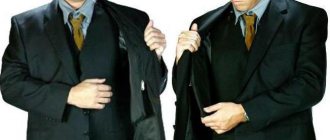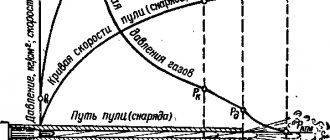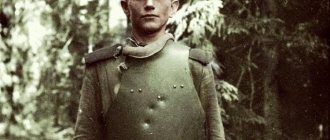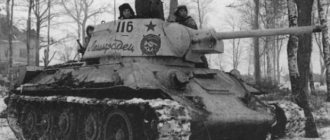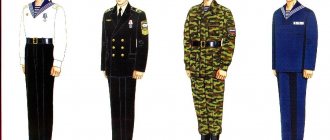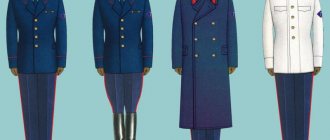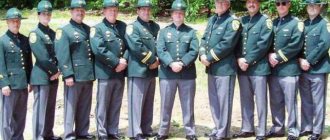First, let's figure out who and why is required to wear personal protective equipment (PPE) while on duty. Such a requirement exists in the regulatory documents of several departments and is carefully monitored. Military personnel, police officers, cash collectors, bailiffs, employees of special forces, prosecutors, subways, departmental, non-departmental and private security organizations must work in body armor.
It is interesting that, even if there are instructions to wear a bulletproof vest, practically nowhere are the standards for the duration of this very wearing indicated. Although they are not difficult to find. Experts have repeatedly conducted research and testing that has revealed a connection between the weight of a bulletproof vest and the maximum duration of its safe wearing. The weight of a bulletproof vest depends on its protection class.
Shooter with a light machine gun in full gear
Protection classes and weight of body armor
Today, GOST includes 6 basic and 1 special class of protection for body armor, which differ from each other in weight, materials used, protection area and ability to withstand different types of weapons. We will not take into account the special zero class, since it is intended for use only in civilian conditions and is effective only against a knife and sharpening.
| What does it protect against? | Material | Weight | |
| Class Br1 | From steel bullets from Makarov and Stechkin pistols, lead bullets from Nagan-type revolvers | Aramid fiber | 1.5-3 kg |
| Class Br2 | From steel bullets TT and PSM, from lead bullets from SR-1 | Aramid fiber with metal plates | 3-5 kg |
| Class Br3 | From steel non-heat-strengthened bullets AK-74 and AKM, steel heat-strengthened bullets from a Yarygin pistol | Several fabric layers, a damper layer and metal plates | 9-11 kg |
| Class Br4 | From heat-strengthened steel bullets AK-74 and AKM, non-heat-strengthened steel bullets from SVD | Several layers of aramid fabric with metal and cermet plates | 10-12 kg |
| Class Br5 | From steel heat-strengthened SVD bullets, special AKM assault rifle bullets | Aramid armor panels with metal-ceramic inserts | 12-16 kg |
| Class Br6 | From heat-strengthened steel bullets of the OSV-96 large-caliber rifle | Equipped with reinforced plates that can withstand several direct hits | up to 23 kg |
Russian law enforcement agencies use body armor of different protection classes. Most often, cash collectors and other employees exposed to increased risk are required to wear at least class three PPE. For private security companies, lighter models of class 2 protection are also quite suitable.
6B23 (Varlo series)
Acceptance for supply of aircraft: 2004 Manufacturer: NPP "KLASS" (Moscow) Design: The 6B23 body armor consists of chest and back sections, interconnected in the shoulder area using a detachable adjustment device. 6B23 is put on over the head. It is fastened at the waist with wide fabric belts with large Velcro. Small fabric armor elements are placed in the side parts of these belts to protect the sides. On the stomach, the belt fastening area is covered with a large folding flap. The camouflage cover is made of synthetic fabric. As in body armor 6B11, 6B12, 6B13, the internal surface of both sections facing the body is covered with vertical polyethylene foam rollers, which form protective dampers. This design of dampers allows both to reduce the armor (concussion) impact and to ventilate the under-vest space. Inside the outer camouflage covers there are internal protective covers (front and back) made of 30 layers of TSVM-2 fabric. It is inside these cases that the armor elements are attached. The front section contains two overlapping armor elements, and the rear section contains one. In the early series of 6B23 body armor, one large armor plate was placed in the front section, but later it was divided into two parts to improve ergonomics. The 6B23 body armor is also equipped with a high adjustable collar to protect the neck and throat from shrapnel. In the latest series of body armor, straps were sewn onto the outer camouflage covers for attaching pouches and other attachments. Armor elements: fabric art. 11938. To enhance protection, either steel armor elements with a thickness of 6.3 mm are used, or a combination of steel and ceramic. Protection level: general – class 1, V50 – 540 m/s; fabric armor elements - class 2; steel armor elements - class 3; ceramic armor element – class 4. Protection area: total – 48 sq.dm; front armor elements - 8 sq. dm; rear armor element – 8 sq.dm; side armor elements (2 pcs.) – 4.6 sq.dm. Weight: 4 kg – with fabric armor elements; 7.9 kg – with front steel, rear fabric; 7.2 kg – with front upper ceramic, front lower steel, rear fabric; 10.2 kg - with front upper ceramic, front lower steel, rear steel. Modifications: 6B23 – fabric armor elements in the front and rear sections; 6B23-1 – steel armor elements in the front section, fabric in the rear; 6B23-2 – in the front section: the upper armor element is ceramic, the lower one is steel; in the back - fabric or steel. Notes: Currently, the 6B23 body armor is the main body armor of the Russian army, however, the Russian Ministry of Defense has stopped purchasing it in favor of the more modern 6B43.
However, NPP "KLASS" continues to produce modernized 6B23 body armor under the names "Korund-VM" (protection class Br4) and "Korund-VM-K" (protection class Br5). The IBA armor protection kit, which has been supplied to the US Army since 1999, has been combat tested in many hot spots on the planet, saved the lives of thousands of American soldiers, and has shown both its pros and cons. The undoubted merit of the IBA kit was confirmation of the correctness of the principles followed by its developers. Let me remind you of this: convenience, modularity, weight reduction and increased protection due to the use of new materials. The disadvantages of the design included poor protection of the lateral and axillary zones (where snipers most often worked), as well as far from perfect ergonomics.
Taking into account all of the above, the command of the US Armed Forces decided to create a new, more advanced body armor. In the spring of 2006, the basic requirements of the PEO Soldier program were published, which companies wishing to participate in the development of prototypes had to adhere to. About two dozen developers took part in the competition, and the result was not one model, but two. This is how IOTV was born - now the main body armor of the US Army and MTV - the standard body armor of the US Marine Corps (MCC).
In the design of both body armor, the creators were forced to abandon the traditional American design - a jacket-type vest with a front clasp. The new American body armor IOTV and MTV, like the vast majority of world models, began to look like a poncho that fits over the head.
Standards for wearing body armor
So, you know the protection class and weight of your body armor. How to determine how long it can be worn continuously? For this purpose, there is data established by specialists during research. They are given in the educational manual by M.V. Silnikov, published in 2000. and Khimicheva V.A. “Personal armor protection equipment.” The following recommendations help to avoid deterioration of well-being and negative effects on the health of the spine; they are relevant for adult men with average physical fitness.
| Body armor weight, kg | Continuous wearing time, h |
| until 3 | 24 |
| up to 7 | 12 |
| until 9 | 9 |
| up to 12 | 5 |
| up to 16 | 2 |
| until 23 | 1 |
It should be specifically emphasized that the figures given are precisely the time of continuous wearing. That is, 24 hours is not 24 hours every day without filming at all. After completing 24 hours (usually one daily shift), the back should be given some time to rest by removing the body armor.
Please note that the above standards are valid only for adult men. What about women? At the moment, there are no published medical studies on this topic, although the number of representatives of the fair sex in law enforcement agencies is increasing from year to year. Here, Russian Government Decree No. 105 dated 02/06/1993 can come to the rescue. It states that the maximum permissible load during a shift for women should not exceed 7 kilograms. This refers not only to the weight of one body armor, but of all equipment together. If you subtract from these 7 kg the weight of the pistol, handcuffs, baton, belt and other things, it turns out that the body armor should weigh about 4-5 kg. A man could walk in it for about 18 hours without any problems; for a woman, the norm is unlikely to exceed 12 hours.
If for you personally or for your superiors the research, the results of which are described in the training manual, is not enough, you can refer to the technical documentation of a specific body armor. Nowadays, responsible companies, as a rule, attach technical and hygienic certificates to their products, which also indicate the maximum time for continuous wearing of the product. However, usually these figures coincide with those presented above.
Fabric: nylon, cordura, kevlar
Protection in the simplest body armor consists of several layers of so-called ballistic fabric (flexible, heat-resistant and waterproof material). Therefore they are very light. Armored clothing of higher classes is made from the same special fabrics, but they have niches for special armored plates.
The vest-cover for plates does not provide any degree of protection and is often made of nylon. This is not a very durable option.
Cordura is considered a more reliable material. This is also nylon, but very thick and reinforced with water-repellent impregnation and a polyurethane coating.
Kevlar body armor is considered the most durable. Kevlar thread is made from para-aramid fiber (aramid) and has very high strength - 10 times greater than steel thread.
The material has a high impact resistance, due to which this body armor can withstand high dynamic loads.
Subsequently, based on aramid, materials for body armor with similar characteristics were developed - Nomex and Tvaron. In addition to para-aramid (Kevlar) fibers, they also contain meta-aramid and antistatic fibers. Thanks to them, the fabric has increased thermal and fire-resistant properties. Otherwise, they are practically no different from Kevlar, having the same high strength index.
Kevlar body armor has a number of disadvantages: this material does not tolerate moisture well. When wet, it loses about 40% of its strength. After drying, all performance characteristics of the BZ are restored.
In addition, when struck by a sharp object (knife or awl), Kevlar fibers easily move apart and allow sharp weapons to cause injury.
But a large number of layers of this ballistic fabric, due to its high strength, can serve as a full-fledged protective plate in a low-class protection armored vehicle. What is commonly called a Kevlar plate is nothing more than 20-25 layers of this fabric.
In what cases does the norm change?
The negative consequences of wearing a bulletproof vest can manifest themselves not only in the form of back pain, but also in a deterioration in general health, overheating of the body, and even heat stroke followed by fainting. Therefore, the above standards must be adjusted depending on the intensity of loads, temperature and humidity of the environment and the materials from which the product is made.
The standards for continuous wearing of body armor are relevant at temperatures from -22 to +18 degrees Celsius and humidity up to 60%. In colder weather they may increase, and in hot weather they decrease. During intense physical activity (especially at temperatures above +20ºС), the norms should also be reduced.
Separately, we note that modern body armor of protection classes 1 and 2 are made from high-quality fabrics that allow air to pass through well and support proper heat transfer. If you have one of these in your service, even in hot weather there should not be much discomfort, including when continuously worn for 12-24 hours. For models of protection classes 3 and above, it is extremely important to take into account environmental conditions.
Everything is clear with the air temperature - you need to avoid overheating the body, but what are the restrictions on humidity? The fact is that when wet, the aramid fiber from which body armor is made loses its protective properties by 40%. And it absorbs moisture very well. The armor panels themselves are usually covered with a water-repellent cover so that they can be used in the rain, but in general the protection still becomes weaker.
A bulletproof vest that gets wet from high humidity or rain should be replaced with a dry one and sent to dry. This is done away from open fire and no closer than 1 meter from heating devices. After drying, the product restores its original protective characteristics.
What's next?
What will body armor look like in the foreseeable future? It is difficult to give an exact answer to this question. There are several interesting developments that could become a reality in the coming years.
Spider Web Body Armor
Americans are doing similar research. It has long been known that spider silk is one of the strongest compounds in nature. It is slightly inferior to Kevlar, but much more elastic than the latter. The US Military Department has allocated 100 thousand dollars to continue the research, and if they are successful, the scientists will be allocated another million dollars.
Liquid body armor
Another interesting direction in the field of creating perfect armor is the development of body armor based on a special gel, which turns into a solid state upon impact. Thus, it seems to absorb the energy of a bullet or fragment.
Similar work is being carried out in several countries at once, and the developers promise to demonstrate practical results in the near future. In physics, such gels are called “non-Newtonian liquids.”
Experiments have shown that such a “gel” body armor is not inferior in its protective properties to thirty layers of Kevlar fabric.
What are the consequences of violating the norms for the duration of wearing body armor?
The designated standards were invented for a reason; they are designed to protect people from many health problems. After all, for all its benefits, a bulletproof vest is a heavy burden for the back. Among the most likely consequences of prolonged wearing of personal protective equipment are:
- osteochondrosis, that is, dystrophic disorders in articular cartilage. How does it manifest itself? Depending on the location (thoracic, cervical, lumbar) - dull or sharp pain in the spine, including when bending, inhaling and exhaling; dizziness, blurred vision and hearing, problems with sweating, erection in men and the menstrual cycle in women;
- intervertebral hernia, that is, displacement of the nucleus pulposus of the intervertebral disc with rupture of the fibrous ring. How does it manifest itself? Local and radiating pain, weakness and numbness of the limbs, headaches, dysfunction of internal organs;
- scoliosis, that is, curvature of the spine. It manifests itself as constant back pain, headaches, chest deformities, fatigue, and in the final stages - dysfunction of the heart, lungs, and intestines.
Types of osteochondrosis
Mask
Another piece of special equipment that can also perform an additional function as an item of clothing is masks. The mask has become an almost necessary attribute of any special operation. There are two types of masks. So, for example, it can have only a hole for the eyes or two holes for the eyes and mouth.
There can be one hole for the eyes or a separate hole for each eye. The material for masks is knitwear. Summer masks are thin, winter masks are thick, and at the same time they also serve as a balaclava. There are options for masks with an extended neck part, which are made of cut-resistant materials. This mask also serves as protective equipment. However, when conducting special operations, it is advisable to completely eliminate contact. There were cases when criminals recognized special forces soldiers only by the expression of their eyes.
Equipment of modern Russian special forces. Front view.
Therefore, there is an option for a special mask, which is made of a fine dark mesh, and the mesh is made double to hide the contour of the face, and in the eye area it is single and does not interfere with vision. In addition, such a mask causes a certain shock with its unusualness. Usually masks are made either black or green.
In addition, they can have camouflage colors, both summer and winter. There are also very unusual coloring options for masks, also designed for psychological impact. For example, a red mask with white or black circles around the eyes or mouth.
Regulatory documents
There are several regulations requiring employees on duty to wear personal protective equipment such as body armor and armored helmets, and they differ for different departments. This may include:
- for police officers - Order of the Ministry of Internal Affairs of Russia dated March 3, 2015 No. 300;
- for bailiffs - Decree of the Government of the Russian Federation dated October 2, 2009 No. 776;
- for employees of investigative bodies of the prosecutor's office - Order of the Ministry of Health and Social Development of the Russian Federation dated October 28, 2011 No. 1217n;
- for employees of investigative bodies of the Investigative Committee of the Russian Federation - Order of the Ministry of Health and Social Development of the Russian Federation dated August 13, 2009 No. 587n (as amended on October 28, 2011);
- for postmen delivering or accompanying mail and money - Order of the Ministry of Health and Social Development of Russia dated June 18, 2010 No. 454n (as amended on February 20, 2014);
- for collectors - Resolution of the Ministry of Labor of the Russian Federation of August 30, 2000 No. 63;
- for departmental security - Decree of the Government of the Russian Federation of December 30, 1999 No. 1436 (as amended on January 18, 2018);
- for FSB employees - Order of the FSB of Russia dated July 21, 2014 No. 415;
- etc.
In addition, the wearing of body armor may be regulated by the internal charter of private security organizations and local laws.
However, none of the existing federal regulations indicate the permissible duration of wearing body armor and armored helmets. Laws only prescribe to whom, in what quantity and for what period the state or organization is obliged to issue personal protective equipment, as well as who and in what cases is obliged to wear them.
For a long time, the only law that generally mentioned the permissible time for wearing a bulletproof vest was local Order No. 474 of August 16, 2003 “On streamlining the use of special equipment by personnel of the Main Internal Affairs Directorate in Moscow.” There was a maximum period of 12 hours. However, in 2013, order No. 474 was canceled by order No. 167 due to the fact that it contradicted Part 4 of Art. 219, part 1 art. 221 of the Labor Code of the Russian Federation.
The absence of clearly established standards for the duration of wearing personal protective equipment leads to many disputes and misinterpretations. Police officers, cash collection officers and other agencies regularly complain of back problems and strive to remove heavy body armor, which entails punishments including dismissal from regulatory authorities, and most importantly, endangers their lives and health.
Scheme of karbid bora (Russian kevlar) plates of soviet armor vests 6B5-15
| T itle of Armor Vest | Size | Front Panel | Back Panel | ||
| Title of Plates | Q uantity | Title of Plates | Q uantity | ||
| 6B5-15 | 1 | Karbid bora ADU-14.20.00.000 thickness 13 mm | 17 plates | Karbid bora ADU-14.20.00.000 thickness 13 mm | 17 plates |
| 6B5-15 | 2 | Karbid bora ADU-14.20.00.000 thickness 13 mm | 20 plates | Karbid bora ADU-14.20.00.000 thickness 13 mm | 19 plates |
To wear or not to wear: a little about laws and ergonomics
Based on the above, a difficult dilemma becomes obvious: on the one hand, due to the lack of official regulations, management has every right to demand that heavy body armor be worn for the entire shift, which can last 12 or 24 hours, on the other hand, it is simply difficult and harmful to health. What should I do? Some employees use tricks, removing armor plates from products and thus making them lighter, or simply remove the body armor without permission. In no case should you do this, because we have one life. As then?
If you work as a security guard, everything is quite simple. According to Part 4 of Article 219 and Part 2 of Article 221 of the Labor Code of the Russian Federation, management is obliged to familiarize the employee with the hygienic and technical certificates of body armor against signature. And there, as we said above, wearing standards are prescribed. If the familiarization was not carried out properly, you can demand that it be carried out, study the standards together with your boss and make adjustments to the work procedure. As a rule, owners of private security companies are more willing to accommodate employees halfway in this regard, not wanting to violate legal requirements.
Of course, employees of the police and other government departments are also covered by the Labor Code. And you, too, may well appeal to this article. However, this will constantly put you in a defensive position. Even if you manage to convince your immediate boss, problems may arise at any time with third-party inspectors, followed by reprimands that you will have to challenge.
This is where the science of ergonomics can come to your back's aid. The comfort of wearing and the degree of load on the spine are affected not only by the weight of the body armor, but also by its distribution throughout the body and the location of the center of gravity. If there are unloading devices, the load throughout the body is distributed more rationally. The most comfortable option is if the bulk of the weight of the body armor falls on the least mobile parts of the body, that is, it does not hang on the shoulders, but is fixed and rests on the pelvic bones.
A loose fit of the body armor to the body also leads to rapid fatigue, especially while running or walking. By the way, you should walk, not forgetting about shock absorption, without sudden movements, sit down and stand up smoothly, without once again displacing the center of gravity and the pelvic bones. If these rules are violated, the step is taken incorrectly and the body armor is worn incorrectly, the threat to the joints and spine increases significantly.
You can see how to put on a bulletproof vest correctly in this material.
Domestic or imported?
Let's not keep the intrigue and answer right away - domestic. And that's why.
Body armor is made according to state standards. In most countries of the world, the American NIJ standard is used. But not in Russia - in our country, manufacturers of armored clothing are guided by GOST R 50744-95.
American and Russian standards are very different. One of the most significant differences is the permissible amount of armor injury. In America, if after a bullet, from which it is supposed to protect, hits a bulletproof vest, a deflection of 44 mm remains on the “body” (testing block), the product is recognized as meeting the standard and allowed for sale. But with such values, the probability of human death is 10%.
Why is that? Firstly, they rely on emergency services personnel, who must arrive at the scene of an incident within a few minutes and save the victim. Secondly, the standard is made so low so that the manufacturing company will not be sued if the person dies. The deceased will simply be written off as “10%”.
Russian GOST is much stricter: the deflection should not be more than 21 mm. With such a deflection, only a hematoma will remain on the body of a person wearing a bulletproof vest. This means that after an attack he will be able to quickly get to his feet, defend himself, and run away.
There is a stereotype that American body armor is better because it is lighter and thinner. In fact, their weight and thickness are less than those of Russian ones, precisely because of the difference in GOST and, accordingly, less reliability. Lightness in this case is not an advantage.
One more point needs to be taken into account. The characteristics of Russian and American weapons, speed, and weight of bullets differ significantly. Manufacturers take this factor into account. NIJ standards are developed taking into account the characteristics of American weapons and ammunition, while the domestic GOST standards take into account the characteristics of Russian weapons and ammunition. If you are planning a trip to America, it makes sense to buy foreign-made body armor. But if you need protection in Russia, it is better to choose armored clothing designed to be fired from a TT or other weapons common in our country. In this case, there is simply no point in buying vests from foreign manufacturers.
conclusions
You should definitely wear a bulletproof vest if your work is directly related to risk. However, it is best to do it correctly and not violate the duration standards established by doctors and manufacturers. Otherwise, problems with your back and joints will begin very soon. Due to the lack of federal regulatory documents, it is quite difficult to combat irrational demands in the service. But probably. The Labor Code of the Russian Federation is always ready to help your back, as well as reasonable ergonomic requirements.
Combined arms body armor 6B11 of the Armed Forces of the Russian Federation. Armored set "Visor"
Combined arms body armor 6B11.
“Vasor” armored set body armor , as well as other body armor of related models 6B12 and 6B13, are included in the “Vaslo” armored set. They were adopted to replace the body armor of the “Beehive” series: 6B3TM-01, 6B4-01 and 6B5. The distinctive ability of body armor 6B11, 6B12 and 6B13 is a higher level and area of protection.
Fakes
There are many cases where, as excellent protection, instead of body armor, products were sold to customers that do not have any degree of savings. In order not to get caught in such a tricky situation, you need to carefully consider the choice of brand, and also require all certificates of quality compliance. It is recommended to ask for shot samples and test reports for inspection. Excessive whimsicality and meticulousness should not embarrass anyone in this case, since one is buying something that is necessary to save the life of someone who will be wearing it in a difficult situation.
Design
Most often, a concealed body armor vest has two layers of protection - Kevlar fabric running along the entire perimeter and a plate, which is necessary to stop a bullet from a machine gun or machine gun. It is important that it has an excellent ventilation and shock-absorbing system (externally represented by inserts in the form of permanent vertical stripes). The fabric from which the protection is made must be waterproof and heat-resistant.
Myths
There are stories related to body armor, but should they all be believed one hundred percent?
If the bullet does not penetrate the product, then no physical harm is caused to the human body. This is not true, because part of the kinetic energy is still transferred to the fighter’s body. As a result, the soldier receives minor hematomas or abrasions, or severe injuries, which include organ ruptures and bone fractures. Sometimes such damage can even be fatal. The injury that will occur depends entirely on the bullet and its caliber, as well as various other characteristics.
You need to check the quality of the body armor on yourself. Doing this is strictly prohibited. There are many recorded cases where the product perfectly contained a bullet, but did not save from severe concussion injuries.
Who are they suitable for?
Most often, such a device is used by those who do not want anyone to know that they have such a design. There can be many reasons for this. Among them is often a reluctance to disturb family and friends, as well as to demonstrate a Kevlar bulletproof vest to colleagues and business partners. But the main goal is still the same; the attacker should not know that his victim is wearing armor. In this case, he will almost certainly choose to inflict several wounds to the torso. If the attacker knows about the protection, he will definitely try to hit the head.
Class "Br1" and "Br2" are easy to hide under a shirt. Most often, such protection is used by bodyguards, businessmen, and those who are interested in transporting expensive goods. Much less often, but still they are bought by private individuals to calm their own fears. It is widespread to provide them to people undergoing witness protection programs.
